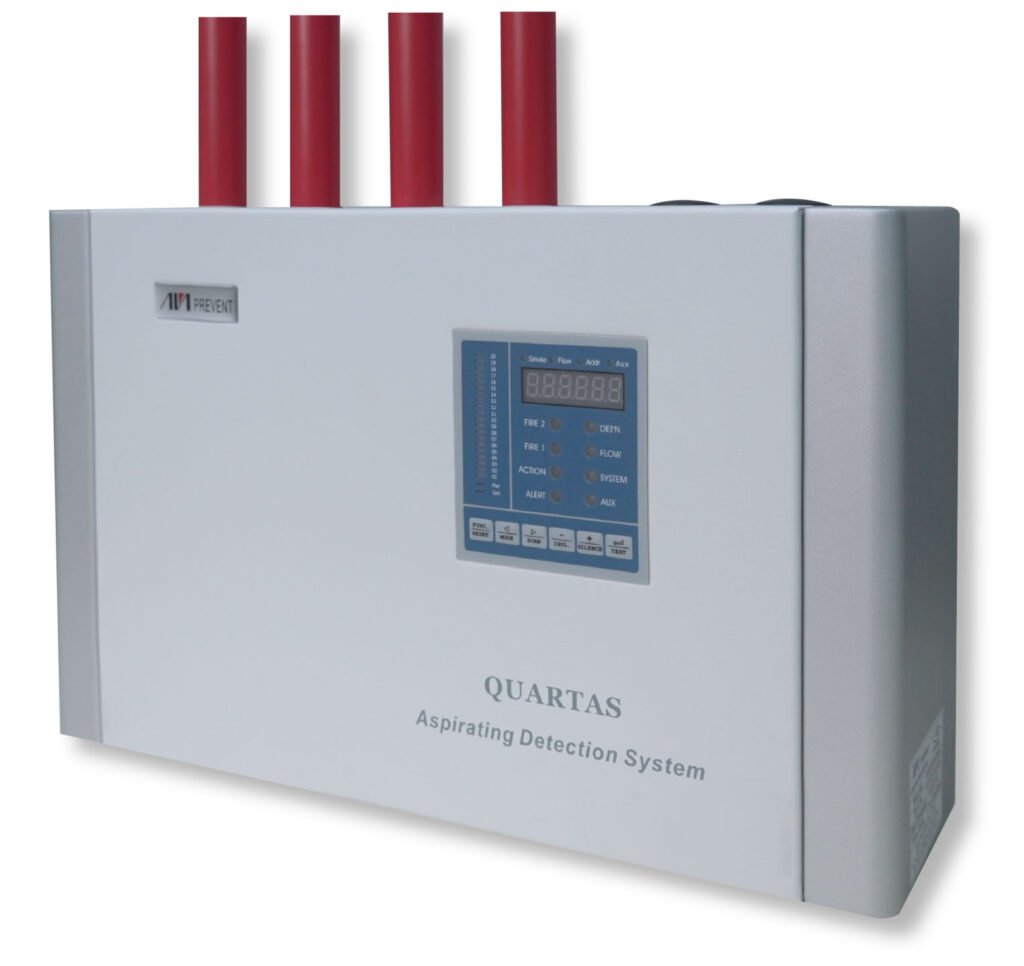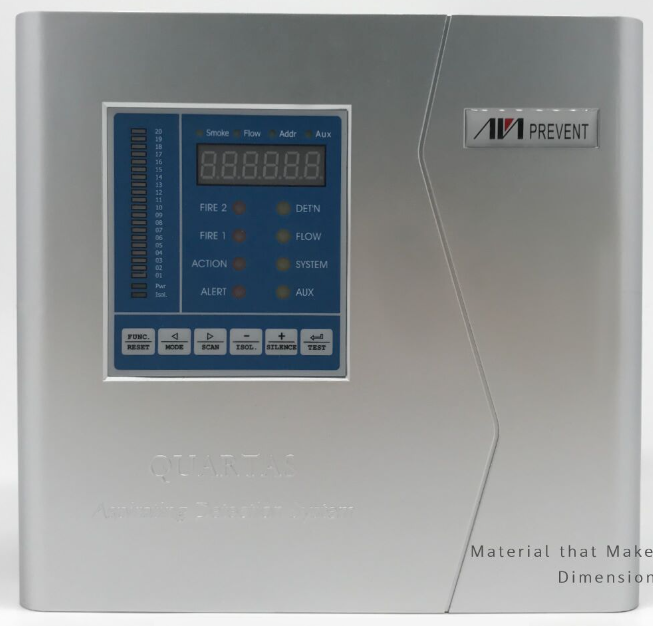An Air Sampling Detector is made out of a pipe or tubing distribution network that gets from the detector to the protected area(s). Through air sampling ports, piping, or tubing, an aspiration fan in the detector housing draws air from the protected region back to the detector. The air is analyzed for fire products at the detector. Air Sampling Smoke Detectors can detect a fire in its earliest stages. Traditional “spot-type” detectors detect smoke or heat in their immediate area. Air Sampling Smoke Detectors actively pull room air through a pipe network to its detecting chamber, where it can detect the presence of particles created in the very early stages of combustion, even before smoke is visible.
What is Air sampling smoke detection system?
An Air Sampling Detector contains a piping or tubing distribution network that travels from the detector to the protected area(s). Air Sampling Smoke Detectors actively draw room air through the piping network to its detecting chamber, where it may detect the presence of particles that are produced during the very early stages of burning, even before smoke is visible.
Modern air sampling smoke detection systems are a thousand times more sensitive than point-type smoke detectors at detecting fires at the earliest.


Applications for Air Sampling Smoke Detection
Air sampling detectors are chosen most often for the following applications:
- Very Early Warning Installed at the ceiling level of rooms containing information technology or telecommunications equipment, fire detection.
- Detection of smoke at air handling return grilles. This technique works really well and has helped thousands of entities avoid fires that could threaten the contents or the building’s operation.
- Buildings where other smoke detectors have failed. Their flexibility allows them to overcome the challenges of many high-challenge smoke detection of environments.
- Rooms where ordinary fire detectors would not work, such as magnetic resonance imaging rooms in hospitals.
- Cold rooms and freezer warehouses.
- Rooms with high ceilings, including warehouses, atriums, and even manufacturing or industrial buildings, where other detectors cannot be mounted on the ceiling.
Benefits of Having a Early Fire Detection System
- Early Warning. Early fire detection systems can detect the presence of a fire in its early stages
Early fire detection systems can detect the presence of a fire in its early phases. Early detection systems can observe the warming of materials before smoke particles or flames form by using infrared cameras. Infrared cameras are the only fire detection devices capable of distinguishing signs of fire before they become visible to the human eye.
- Property Protection.
By detecting a fire early and alerting authorities, an EFD system can help to protect the building and its contents from damage. It is an important safety measure that can help protect assets and minimize the impact of a fire on a business or organization.
Air sampling smoke detection system immediately sends a map of hazards to all building occupants and first responders during an emergency. The map can detect the position of the fire in real time and help in determining how rapidly the fire is evolving. This helps optimize response time and preserve building assets while keeping others out of harms.
- Life Safety.
By alerting building inhabitants to the existence of a fire and allowing them to evacuate safely, an early fire detection system can save lives. Early warning signals can notify a select group of people about a possible problem before it becomes widespread. This saves valuable time for safety protocols to be followed and the hot spot to be extinguished before it becomes a dangerous hazard.
Alerts can be sent via email, text messaging, or phone call using Early fire detection systems. Each message may be completely customized based on the location and severity of the issue. This eliminates the possibility of employees being in the wrong place at the wrong time.
- Legal and Insurance Requirements.
In many cases, building codes and insurance policies require the installation of a fire detection and alarm system to assist safeguard against the risk of fire. Insurance companies can reduce the risk of fire-related losses and, as a result, the cost of insurance premiums for policyholders by mandating a fire detection system as a condition of coverage.
- Cost Savings.
A fire detection system can help to minimize the expense of fire-related damage by detecting it early and alerting authorities so that they can respond quickly.
Automatic aspirating maintenance system
The advantages of an automatic aspirating maintenance system:
• Reduces filter replacement
• Reduces the wear and tear of the ASD
• Stops the transport and lifting of vacuums and compressors
• Reduces call outs caused by flow faults
• Lowers overall cost of maintenance
FAQ
Air sampling, also known as Aspirating Smoke Detection (ASD) devices, can identify fires at an early stage, generally before visible smoldering or an open fire explodes and develops important smoke.
Early detection is crucial in minimizing the impact of a fire on your business and, most importantly, human life. The sooner a fire is detected, the quicker an emergency protocol may be created, and rescue crews can get on the spot and respond appropriately.
Air sampling works by continuously analysing the air within your premises and dragging in air samples using fans to identify any changes that may indicate the presence of a fire. Using an ASD system, you can be alerted of the presence of a fire or potential fire before it develops.
The system works by:
Constantly drawing air into a network of pipes which feeds a dual stage filter.
The first stage of the filter cleans the air of dust and grime before it reaches a laser detection chamber for smoke detection.
The air then passes through a second filter, where it is cleaned further to keep the detector’s optical surfaces clean.
This provides consistent calibration and detector life.
An air sampler generally consists of a port that directs air into a collector, a filter to screen out larger particles that might interfere with analysis, a collector where the sample is deposited, a flowmeter and valve to calibrate the air flow, and a pump to pull air through the system.
“Air sampling points on air sampling smoke detectors should be configured like point-type smoke detectors.”
This means that, when planning an air sampling smoke detection system, an air sampling point for a Class C detector, for example, will respond with the same degree of sensitivity as a traditional point-type smoke detector.
